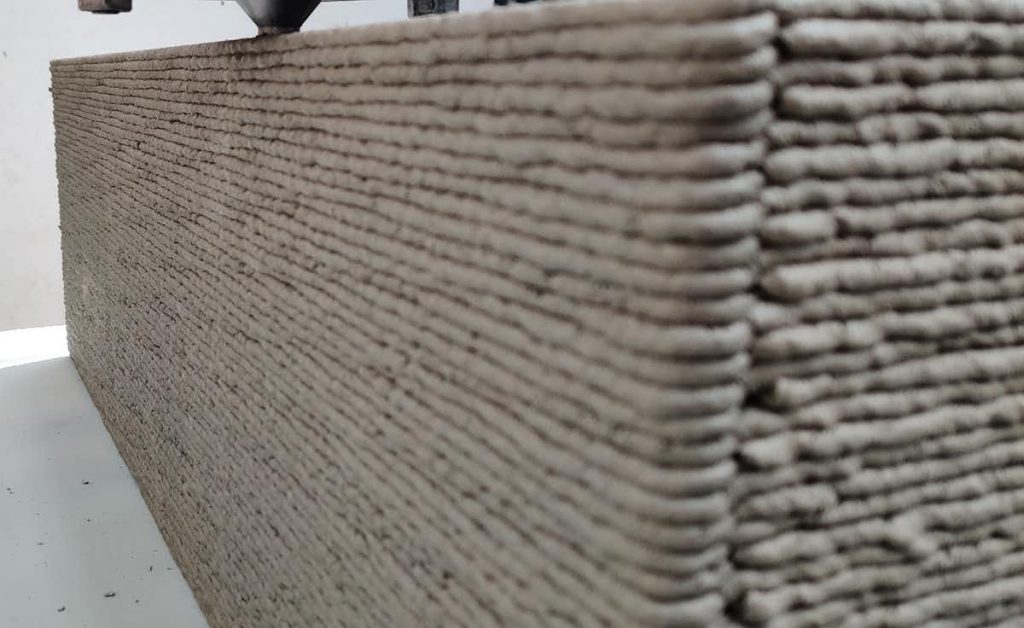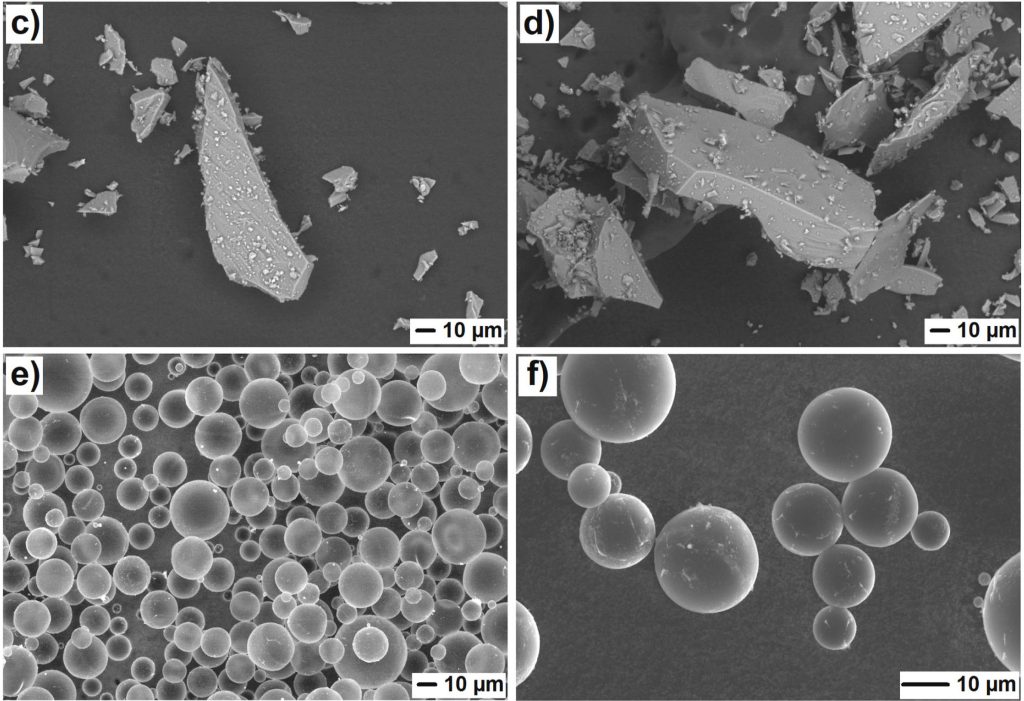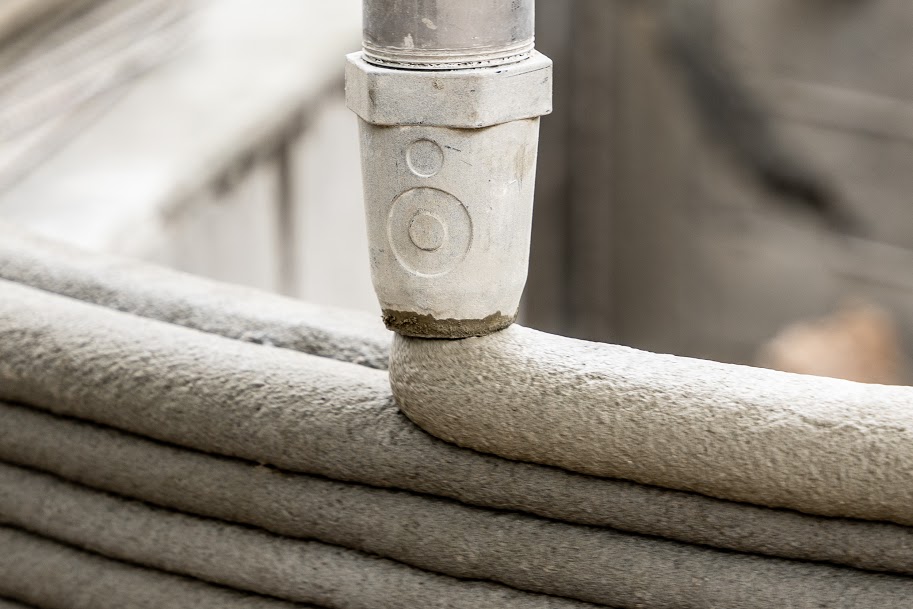Researchers at Technische Universität Berlin (TU Berlin) and Brunel University have come up with a way of turning 3D printing concrete into a more robust, eco-friendly building material.
By partially replacing the sand in the Portland cement used to make concrete with recycled glass, limestone and plastic fillers, the team has managed to drastically improve its strength and thermal conductivity. Having already deployed their novel material to 3D print chunks of wall, the engineers say that with further R&D, it could eventually be used to erect the better-insulated buildings of the future.
“Vast quantities of natural sand are currently used to meet the world’s insatiable appetite for concrete, at great cost to the environment,” the researchers told The Conversation. “Our new research suggests a way to curb this impact. Our research shows that an ultra-lightweight, well-insulated 3D building is possible – something that could be a vital step on our mission towards net zero.”

Improving concrete’s sustainability
Generally, concrete is made from a mixture of cement, water and aggregates such as sand, but the latter is often sourced unsustainably from riverbeds and beaches. What’s more, according to the researchers, high volumes of expensive admixtures are often added to ensure that this cement has sufficient flowability and buildability for 3D printing, thus raising the cost of any structures it’s used to build.
To combat these drawbacks, a considerable amount of research has been poured into replacing the binder in cement with various different fillers or natural aggregates. In 2020, for instance, a team at the Tongji University proved it possible to add sand recovered from demolitions in place of cement, without impacting its printing properties, albeit at the cost of modifications that affected its workability.
Likewise, engineers at NTU Singapore have previously demonstrated the efficacy of incorporating waste glass into concrete, finding that it improved the material’s flowability, but the mixture still showed weak buildability during practical tests.
Taking inspiration from these approaches, the Anglo-German team have now taken recycled glass bottles, crushed them down, washed, dried, milled and sieved them, before mixing them into concrete. The engineers have also added limestone and tiny plastic spheres to their mixture in measured amounts, which are designed to act as sustainable binders that yield structures with improved thermal properties.

Better-insulating future buildings
Initially, the researchers formulated six different concrete mixtures, each composed of between 50 and 100% glass waste aggregate, before 3D printing them into a set of 40 x 40 x 160 mm samples. Interestingly, in doing so, the team found that all their mixtures had the flowability required to retain their shape after printing, but those containing microspheres did take much longer to set into shape.
That being said, the engineers also discovered that integrating these lightweight fillers into their material allowed it to be deposited into samples with a 40% lower thermal conductivity than traditional 3D printing concrete, while compressive strength testing revealed that their resistance properties actually increased as more waste glass was introduced.
Given the benefits of insulation as means of reducing the need to consistently warm and cool down buildings, the team therefore see their material as ideal for helping construct future low-carbon infrastructure. The researchers also believe their concrete could unlock the potential of construction 3D printing, a technology they view as having inherent sustainability benefits of its own.
“Using 3D printing technology, we can develop a wall structure on a computer, convert it to simple code and send it to a 3D printer to be constructed,” concluded the researchers. “3D printers can operate for 24 hours a day, decrease the amount of waste produced, as well as increase the safety of construction workers.”

With concrete 3D printing continuing to advance towards mainstream construction, the attention of early market leaders and researchers alike has begun to turn to perfecting the materials behind the technology. Similarly to the Anglo-German researchers, a team at RMIT University also toyed with adding recycled glass to concrete last year, finding that resulting materials had strong circular credentials.
Working with COBOD, building material specialist CEMEX has also developed a means of making regular concrete 3D printable, and potentially improving the technology’s accessibility. By integrating its D.fab admixture into everyday concrete, the firm has come up with a material that’s said to “gain shape instantaneously,” lending it significant lead time and construction cost-minimizing capabilities.
The researchers’ findings are detailed in their paper titled “3D printable lightweight cementitious composites with incorporated waste glass aggregates and expanded microspheres – Rheological, thermal and mechanical properties.” The study was co-authored by Karla Cuevas, Mehdi Chougan, Falk Martin, Seyed Hamidreza Ghaffar, Dietmar Stephan and Pawel Sikora.
To stay up to date with the latest 3D printing news, don’t forget to subscribe to the 3D Printing Industry newsletter or follow us on Twitter or liking our page on Facebook.
For a deeper dive into additive manufacturing, you can now subscribe to our Youtube channel, featuring discussion, debriefs, and shots of 3D printing in-action.
Are you looking for a job in the additive manufacturing industry? Visit 3D Printing Jobs for a selection of roles in the industry.
Featured image shows a section of 3D printed wall made partially from recycled aggregate. Photo via Mehdi Chougan, TU Berlin/Brunel University.



